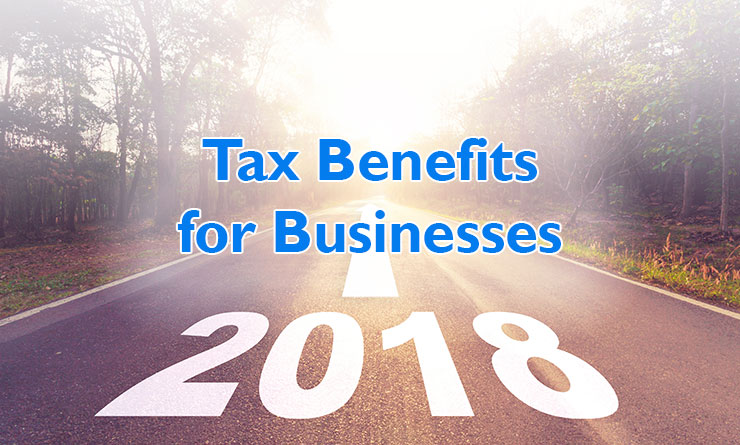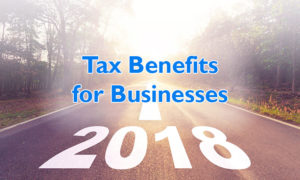Equipment Finance Insights
2018 Tax Benefits for Businesses
March 1st, 2018

Whether you’re a small business owner or part of a large, multinational corporation, the revised 2018 tax benefits has likely become the center of many conversations and strategy sessions.
Many of us know the big picture of how the new tax bill slashed corporate tax rates from 35 percent to 21 percent. This drastic cut will free up capital and allow businesses to invest in new markets, hire staff and make equipment purchases they may have been putting off.
That’s the 50,000-foot view.
For a closer look at how your business can take advantage of the 2018 tax benefits, let’s dive in and have a look at three of the most significant changes to the new tax code, the Tax Cuts and Jobs Act, and how these changes may specifically benefit your equipment-purchasing decisions.
You may be entitled to claim a larger deduction. The Tax Cuts and Jobs Act (H.R.1) has several benefits that specifically target businesses, including the increase of the maximum deduction allowed under Section 179. If you’re a business owner, you know and love Section 179. This provision allows businesses to deduct a substantial amount of the purchase cost on qualified business property. In 2017, businesses could write-off up to $500,000, subject to a dollar-for-dollar bonus depreciation for every dollar spent up to $2 million. Under the new tax legislation, businesses can deduct twice that amount, or $1 million in qualifying capital equipment and retail software. This is subject to the same dollar-for-dollar bonus, but now begins when spending goes over $2,500,000. Raising the total amount that can be deducted and the maximum amount a business can spend on equipment, while still qualifying for this deduction, will make 2018 a great year for large equipment acquisitions.
New opportunities for pass-through entities. Before the Tax Cuts and Jobs Act was enacted, pass-through entities such as limited liability corporations (LLCs), sole proprietors and S corporations, which make up a significant portion of U.S. businesses, were effectively taxed at an individual rate. The new tax legislation puts in place an additional deduction of up to 20 percent on income for pass-through entities, allowing these entities to be taxed at a rate that is similar to the new corporate tax rate of 21 percent. This deduction is subject to certain restrictions and only applies to qualified business income. This additional deduction means that businesses that are structured in a variety of ways can access lower tax rates.
The bonus depreciation. One of the most important tax breaks businesses would take advantage of before the Tax Cuts and Jobs Act was deducting a percentage of the cost of qualifying assets as “bonus depreciation.” The assets many business owners were most eager to claim as deductions included computer software and property that had a depreciation life of 20 years or less. This previous rate was 50 percent. But now, to the delight of businesses everywhere, it has been raised to 100 percent. This is one of the most substantial changes in the H.R.1 act and allows businesses to take an immediate deduction on eligible business property, including used business property, which was previously disqualified. You’ll want to take advantage of bonus depreciation within the next five years. Starting in 2023, the bonus depreciation will begin to be phased out.
Months before the tax bill reached the floor, politicians said they wanted a tax code that was so simple, people could do their taxes on a postcard. Needless to say, the 500-page bill turned out to be slightly more complicated than some may have hoped for.
The point here is, tax law is complicated! Knowing the basics of these new 2018 tax benefits can help you to plan for those equipment purchases you’ve been putting off. Be sure to meet with your accounting team to fully understand all the details of the new tax code and what it means for your business. More information about 2018 tax benefits for businesses can be found on the congress.gov website.
Download this information in our Free 2018 Business Tax Quick Guide.

Back to List
